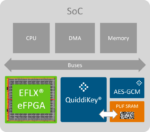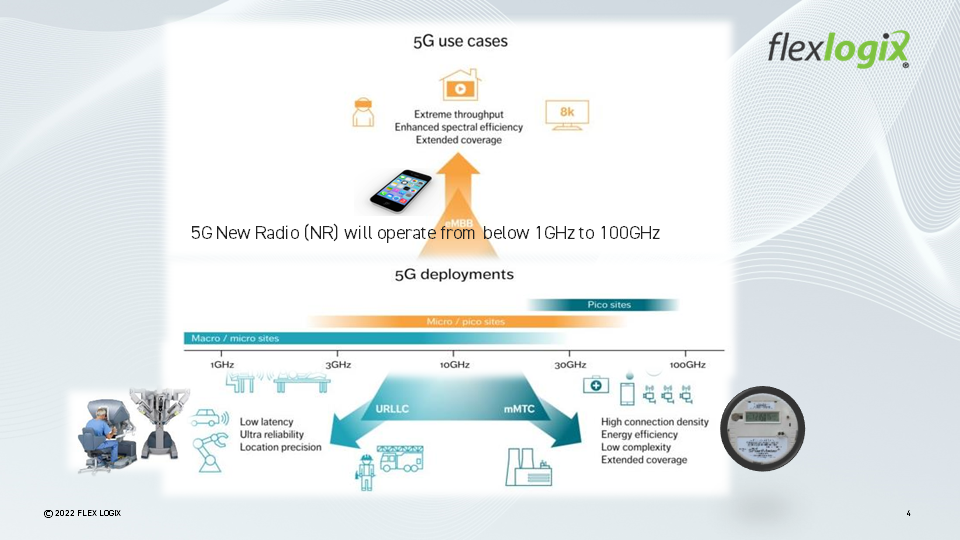The rapid technological evolution and soaring mask set costs have created numerous challenges for designers today. Protocols, algorithms, and cryptography are all advancing at a blistering pace, leaving designers struggling to keep up. While fab suppliers are enhancing performance and reducing power consumption, this … Read More
Tag: flex logix
WEBINAR: Enabling Long Lasting Security for Semiconductors
Today we live in a world where technology is a part of our everyday lives, not only our personal data, but all devices we rely on on a daily basis including our automobiles, cell phones, and home devices. Hackers have found creative and novel ways to corrupt these products, disable systems, steal secrets and threaten our identities.… Read More
LIVE WEBINAR: Accelerating Compute-Bound Algorithms with Andes Custom Extensions (ACE) and Flex Logix Embedded FPGA Array
RISC-V have great adoption and momentum. One of the key benefits of RISC-V is the ability for SoC designers to extend its instruction sets to accelerate specific algorithms. Andes’ ACE (Andes Custom Extensions) allow customers to quickly create, prototype, validate and ultimately implement custom memories, dedicated ports… Read More
WEBINAR: Taking eFPGA Security to the Next Level
We have written about eFPGA and for six years now and security even longer so it is natural to combine these two very important topics. Last month we covered the partnership between Flex Logix and Intrinsic ID, and the related white paper. Both companies are SemiWiki partners, so we were able to provide more depth and color:
In the … Read More
Flex Logix: Industry’s First AI Integrated Mini-ITX based System
As the market for edge processing is growing, the performance, power and cost requirements of these applications are getting increasingly demanding. These applications have to work on instant data and make decisions in real time at the user end. The applications span the consumer, commercial and industrial market segments.… Read More
Podcast EP102: A Brief History of eFPGA with Geoff Tate of Flex Logic
Dan is joined by Geoff Tate, CEO and Co-founder of Flex Logix. Geoff explains the embedded FPGA market, including some history, applications and challenges to deliver a product that customers really want. He provides some very relevant background on why Flex Logix has been so successful in this market, and what lies ahead.
GEOFF… Read More
Flex Logix Partners With Intrinsic ID To Secure eFPGA Platform
While the ASIC market has always had its advantages over alternate solutions, it has faced boom and bust cycles typically driven by high NRE development costs and time to market lead times. During the same time, the FPGA market has been consistently bringing out more and more advanced products with each new generation. With very… Read More
WEBINAR: 5G is moving to a new and Open Platform O-RAN or Open Radio Access Network
The demands of 5G requires new designs to not only save power but also increase performance and by moving to advance power-saving nodes and by using eFPGAs will help to achieve these goals. This paper will introduce 5G and O-RAN, the complexity of these systems, and how flexibility could be beneficial. Then we will dive into how eFPGA… Read More
A Flexible and Efficient Edge-AI Solution Using InferX X1 and InferX SDK
The Linley Group held its Fall Processor Conference 2021 last week. There were several informative talks from various companies updating the audience on the latest research and development work happening in the industry. The presentations were categorized as per their focus, under eight different sessions. The sessions topics… Read More
Podcast EP33: Processing AI Workloads
Dan and Mike are joined by Dana McCarty, vice president of sales and marketing at Flex Logix Technologies, Inc. Using an eFPGA-based architecture for processing AI workloads is discussed, along with typical applications and power, performance and cost benefits. The competitive positioning of Flex Logix’s InferX X1 … Read More








